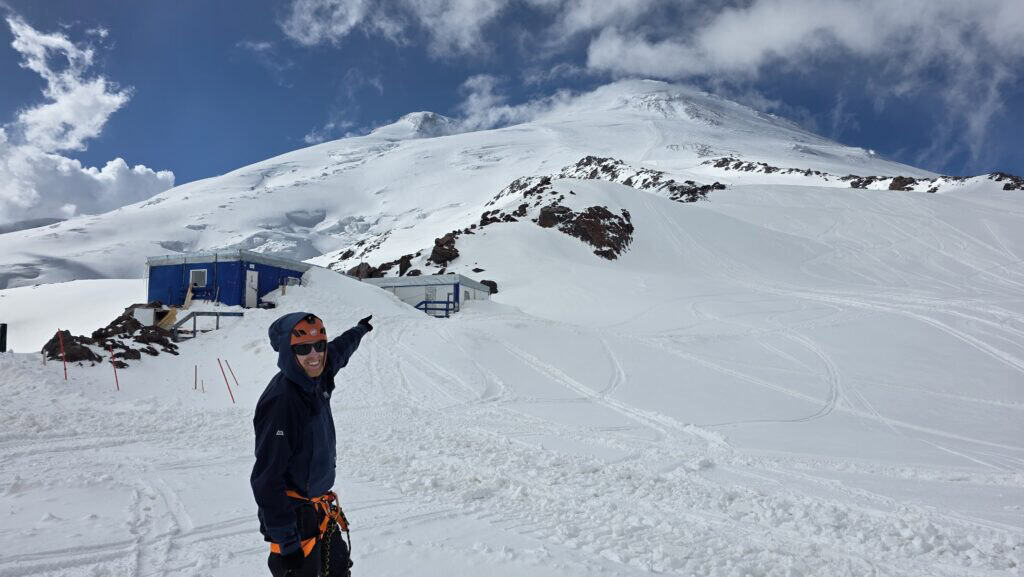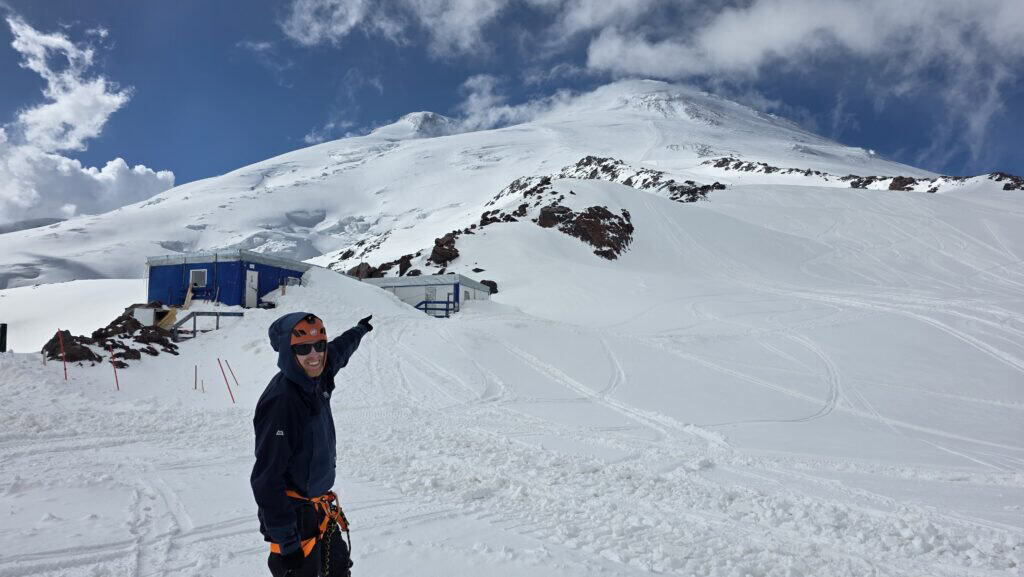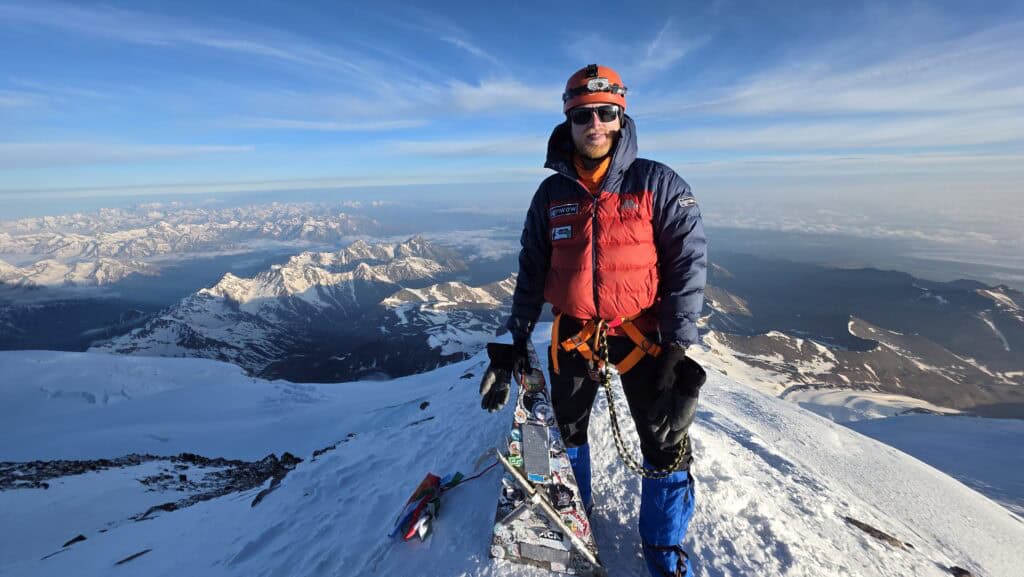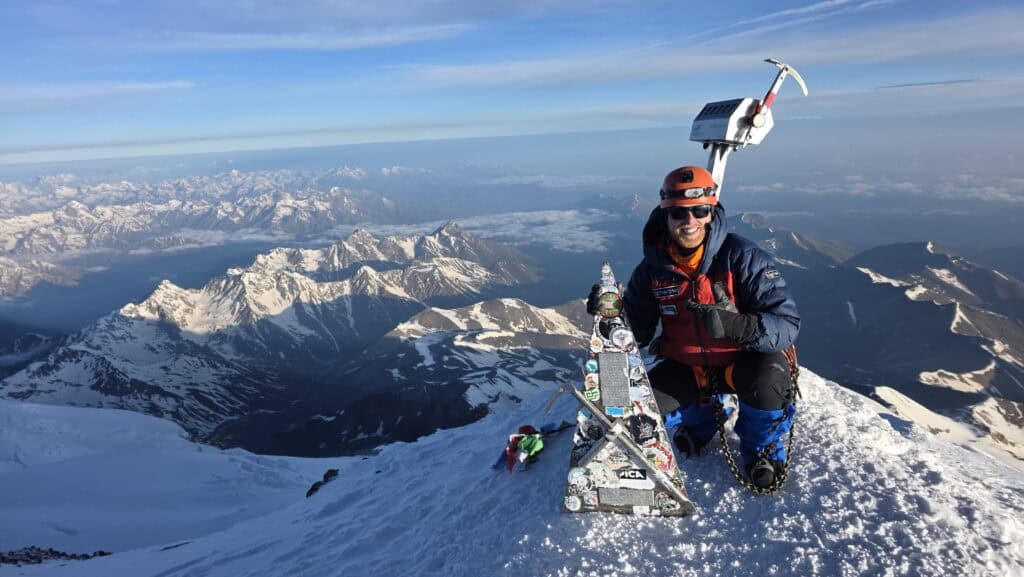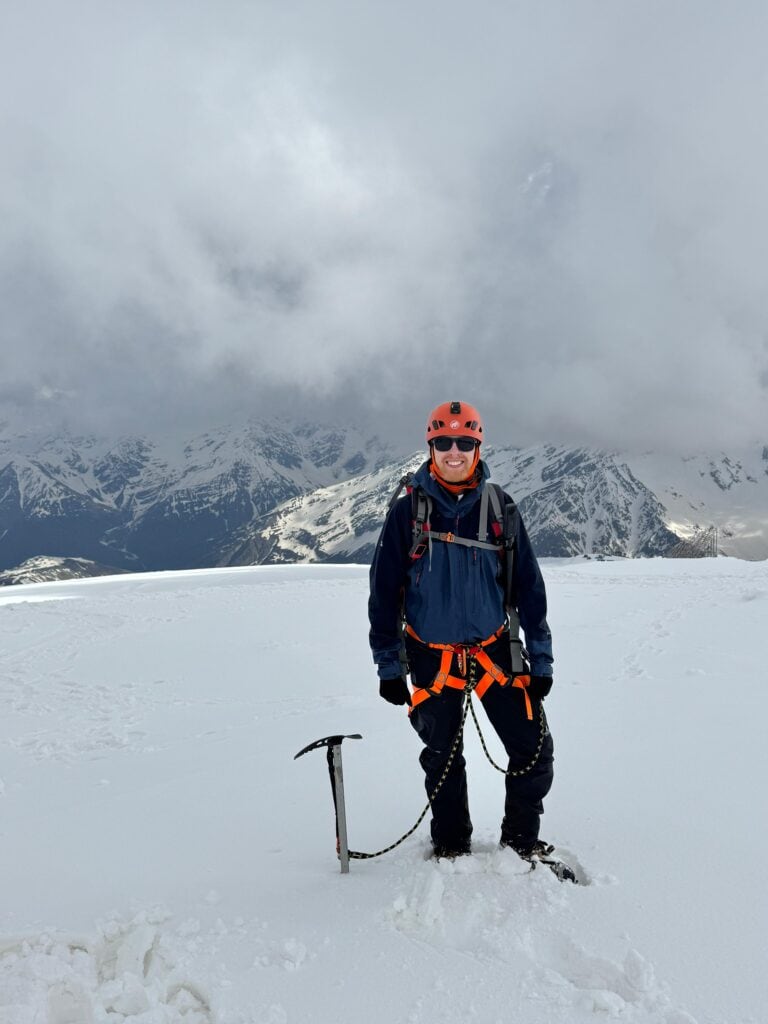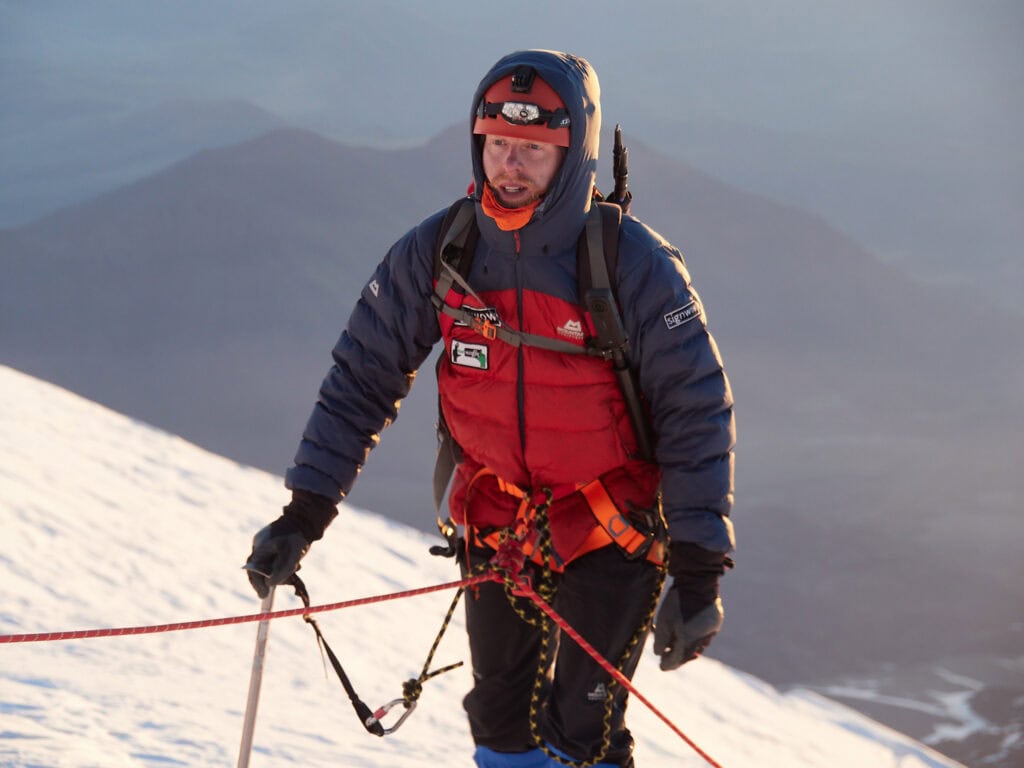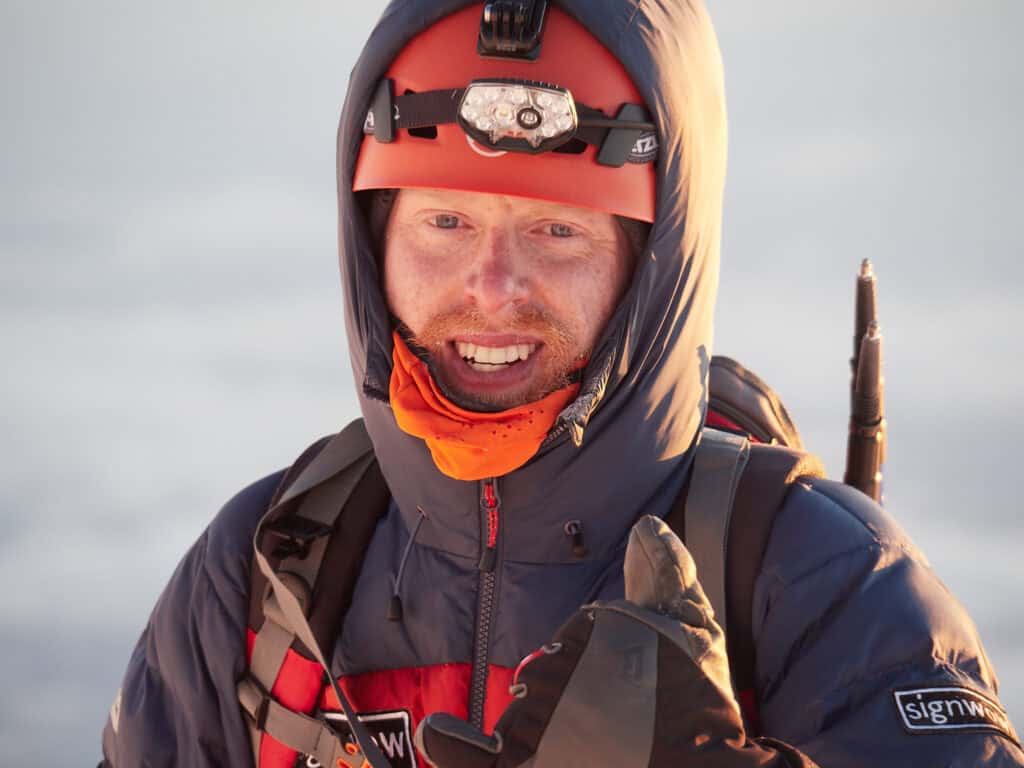Mt. Elbrus (5,642m) – Europe’s Highest Peak
MY ELBRUS SUMMIT – ANOTHER STEP TOWARDS THE SEVEN SUMMITS
On the 5th of June 2025, I stood on the summit of Mount Elbrus, the highest mountain in Europe. It was one of the most emotional and proudest moments in my mountaineering journey so far. This climb wasn’t just about ticking off another mountain, it’s part of my bigger goal to complete the Seven Summits and become the first Deaf British climber to achieve this legendary challenge.
Why Elbrus?
Mount Elbrus is one of the Seven Summits and reaching the top of this mountain was always part of my plan. Every summit brings me one step closer to the ultimate goal of standing on top of Mount Everest. But more than that, I want to inspire the Deaf community and prove that nothing is impossible, no matter the obstacles we face. To be part of mountaineering history as a Deaf climber means a lot to me.
The Preparation
Training for Elbrus wasn’t just about this mountain, it was also part of my preparation for Everest 2026. I worked closely with my personal trainer, Mark Hunt, who has been coaching me physically and mentally for these big challenges. My training routine included a lot of gym sessions, cardio work, running, mountain hiking across the UK, and even ice baths to build my body’s ability to handle the cold. I’ve done Snowdon over 70 times now, which has helped me massively with endurance and mindset.
All this training has built a strong foundation for high-altitude climbing. Elbrus was another chance to test myself at altitude and see how my body reacts as I keep pushing towards bigger mountains.
The Climb
I went with a guided company called Climbing Elbrus, taking the South Route. It’s the most common route but still not an easy one. I joined a group of 8 climbers including myself. I knew it would be a tough challenge, but I felt well prepared.
The first day of trekking was wet and rainy, but I had my Goretex Pro gear which kept me dry and comfortable. After that, the weather was perfect, sunny, clear skies, beautiful views, and no storms. We were lucky to have such great conditions, especially for our summit push.
Surprisingly, I didn’t struggle with altitude or fatigue during the climb, but others in the group did. Out of the 8, only myself and Matt Royce were fully fit and strong the whole time. The others showed signs of altitude sickness — headaches, nausea, no appetite during dinner, and two of them eventually had to pull out of the expedition. It was a reminder how important training and preparation really are for high-altitude climbing. In the end, 6 of us made it to the summit.
The Summit
Reaching the summit of Elbrus was very emotional for me. My eyes were filled, and I couldn’t believe I was standing on top of Europe. The cold and wind were brutal near the top, but the view was absolutely stunning. I kept reminding myself that this is all part of my Everest preparation, and standing here made me even more motivated to keep going.
The descent wasn’t easy either. We dropped 1800 meters in about two hours, going back down to the hut. I was very tired, especially after having only about 3 hours sleep before the summit push, but I stayed focused and kept going strong all the way back down.
Deaf Challenges On The Mountain
As a Deaf climber, there were some extra challenges on this trip, mainly around communication. I faced a lot of communication breakdown with the guide, especially during the briefing sessions which were poorly done. The company could have done better to make sure everything was accessible for me, but sadly they didn’t make much effort. I was very lucky to have two friends with me who could understand the guides a bit better than me, and they passed on information when I needed it.
During the climb itself, it was much easier because of my experience. I know how to clip into the ropes, handle my gear, and stay safe even without much verbal instruction. It was also interesting to work out how to communicate with the climbers in front and behind me while roped together. We found our own way using small signals and rope tension.
A Special Experience
One thing that made this trip even more special was having friends with me who can use British Sign Language (BSL). On some of my previous expeditions, I couldn’t use BSL at all and had to rely on my phone to communicate. This time was different — I felt more relaxed, more connected, and it made the whole experience more enjoyable.
How Elbrus Helps My Everest Preparation
After summiting Elbrus, my confidence for Everest and my Beyond 7 Summits project has grown even more. Just three weeks after Elbrus, I’ll be heading to Kilimanjaro, and after that hopefully Aconcagua before Everest in 2026.
This climb showed me that I’m in good mental and physical shape. I was one of the fittest in the group, which helps confirm that my training is working. It would be quite embarrassing if I wasn’t fit at this stage, especially as I continue preparing for Everest!
Looking Ahead
Elbrus has given me even more motivation to keep pushing. Every summit teaches me something new, and while I didn’t learn any new technical skills on Elbrus, it was another great experience in handling altitude, cold, and tough conditions. I’m ready to keep building on this as I move forward with my Seven Summits journey.
Fact Summary
-
Mount Elbrus is the highest mountain in Europe, standing at 5,642 meters above sea level.
-
It is a dormant volcano with two main summits—the west summit being the highest.
-
While technically in Russia, it’s considered part of continental Europe, placing it on the Seven Summits list.
-
Despite its height, it is often described as non-technical for experienced climbers, thanks to cable cars and snowcats aiding ascent.
-
Weather can be extremely harsh, and proper acclimatization is crucial due to altitude sickness risks.
-
The mountain is glaciated year-round, with over 20 glaciers descending from its slopes.

